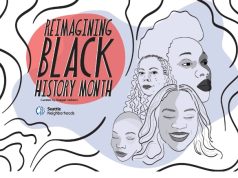 Killer Infographics is the arresting name for the Seattle-based marketing and design firm that has proven how – when it comes to Infographic (or “IG”) success – “execution” is everything! The two co-founders, not Bonnie and Clyde, but Amy Balliett and Nick Grant, have both been among Seattle’s “Most Wanted” in online marketing and business development, respectively. The two local all-stars met while working at, you guessed it, All Star Directories.
Killer Infographics is the arresting name for the Seattle-based marketing and design firm that has proven how – when it comes to Infographic (or “IG”) success – “execution” is everything! The two co-founders, not Bonnie and Clyde, but Amy Balliett and Nick Grant, have both been among Seattle’s “Most Wanted” in online marketing and business development, respectively. The two local all-stars met while working at, you guessed it, All Star Directories.
The original focus of the company, birth-named Seven Figure Project, Inc., was to build Web sites and monetize them in various ways, typically involving affiliate marketing and lead generation techniques. Amy and Nick quickly discovered that developing infographics was an even more powerful, measurable and obtainable driver with a rich reward — a higher search engine ranking.
In just two short years, the firm has created over 1500 viral Infographics for hundreds of top brands around the world. From their Ballard studios they have done “killer” work for such companies as Conde Nast Publications, Cox Cable, Microsoft, Ford and WhitePages.com, as well as KissMetrics, Buddy TV and Buddy.com here in Pugetopolis.
We apprehended the firm’s femme fatale to extract her confession on how to produce and promote “killer” Infographics that get results. The chilling details follow….
Seattle24x7: Take us back to the early days of Killer Infographics. How did the first killer infographic come off the drawing board?
 Amy Balliett: We started pushing out our first infographics for one of our primary sites at the time, ZippyCart.com, which was a software review site for e-commerce shopping cart systems. That was when we started to see the power of the infographic to get real traction in search. At the same time, we couldn’t help but notice that people didn’t seem to understand how to share infographics. They didn’t know how to properly create embed code.
Amy Balliett: We started pushing out our first infographics for one of our primary sites at the time, ZippyCart.com, which was a software review site for e-commerce shopping cart systems. That was when we started to see the power of the infographic to get real traction in search. At the same time, we couldn’t help but notice that people didn’t seem to understand how to share infographics. They didn’t know how to properly create embed code.
So we bought the domain name, SubmitInfographics.com to launch a user-generated infographics gallery that would help evangelize infographics and showcase how they are promoted, coded, linked, credited, and more. The gallery exists to this day as a free service (a Facebook “Like” is the token gesture requested for gaining admission, which also gets you a consistent, up-to-date feed of current infographics – 24×7 Ed.) and averages around 25 submissions a day. Once submitted, SubmitInfographics.com editors will take a look and post the submissions as time allows.
Seattle24x7: SubmitInfographics.com is about as close as you can get to a domain name that describes exactly what people were looking to do at that time?
Amy Balliett: This is true. And as we progressed, and blogged about various techniques and topics, we quickly developed a reputation as people who knew what to look for in the design of an infographic to make something viral. People began reaching out to us asking if we could handle the design end for them. As such, we started focusing exclusively on becoming an infographics design agency.
Seattle24x7: Tell us about the anatomy of an IG in terms of design and best practices. Is there a rule of thumb as to how long an IG should be?
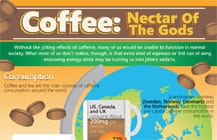 Amy Balliett: There’s no rule of thumb. It’s really all based on the topic. For an example of what “doesn’t” work, we contracted with one company for a short period of time that had a very strict rule of making their infographics 2000 pixels or shorter. Well, 2000 pixels does not provide enough room to include much information. They found they were not having much success with that size restriction.
Amy Balliett: There’s no rule of thumb. It’s really all based on the topic. For an example of what “doesn’t” work, we contracted with one company for a short period of time that had a very strict rule of making their infographics 2000 pixels or shorter. Well, 2000 pixels does not provide enough room to include much information. They found they were not having much success with that size restriction.
Seattle24x7: This was a self-imposed limitation in terms of size?
Amy Balliett: I think they were fashioning a formula where they would charge their clients by the length, and felt that 2000 pixels was a comfortable fit. Looking back, it’s clear that one size does not fit all. The subject matter of the topic and the marketing purpose of the IG are ultimately going to determine how long an IG needs to be.
Seattle24x7: I’m sure you must have many instructive examples?
Amy Balliett: Absolutely. There are clients that want to produce an IG that is an “end-all, be-all” source of information for a particular topic. And you can contrast that with others whose objective is on the branding side with less in-depth information and more connections on the surface.
 A good for instance? We did one IG about the Fukushima catastrophe. It went into a lot of depth about what happened on Day 1, Day 2, Day 3, Day 4, in chronology, as the events unfolded. We also brought in the eye-opening facts about that catastrophe, as well as predictions for the future. That’s a very extensive amount of information; a very thorough infographic.
A good for instance? We did one IG about the Fukushima catastrophe. It went into a lot of depth about what happened on Day 1, Day 2, Day 3, Day 4, in chronology, as the events unfolded. We also brought in the eye-opening facts about that catastrophe, as well as predictions for the future. That’s a very extensive amount of information; a very thorough infographic.
Seattle24x7: Is there a length that defeats the purpose of the IG as an information resource?
Amy Balliett: I think so. Anything over 20k pixels is too much. And we have seen IGs that are 40k pixels long. For some, that is an obscene amount of information. The average IG length is going to be about 5000 pixels tall.
Seattle24x7: You have also begun featuring “Interactive Infographics.” What can you tell us about that?
Amy Balliett: There are two different products that fall into this category. What you might call an infovideo, we call “motion graphics.” It’s really an animated video using design and illustration. The other product is an interactive graphic. What distinguishes this is that you can point and click. You can grab things and move them around. You could describe it as its own mini-widget, or mini-website, in a sense.
 For instance, on our website, we have an interactive infographic called Pulp Fiction Personified. And in that interactive infographic, you can click on the various Pulp Fiction characters, and as you click on them, you hear a quote from Pulp Fiction. That’s interactive, because you are interacting with the infographic itself. Whereas with a video infographic, you hit play, and you keep watching.
For instance, on our website, we have an interactive infographic called Pulp Fiction Personified. And in that interactive infographic, you can click on the various Pulp Fiction characters, and as you click on them, you hear a quote from Pulp Fiction. That’s interactive, because you are interacting with the infographic itself. Whereas with a video infographic, you hit play, and you keep watching.
Seattle24x7: When would you advise a client to do an interactive Infographic versus a conventional (or motion-based) Infographic?
Amy Balliett: Well, until HTML5 started to get really popular, we actually always suggested static infographics instead of interactive ones, because Flash is not SEO-friendly. But now, I’ll recommend an HTML5 interactive infographic if the client is looking for creative that will keep their users engaged for more than three minutes. For something that has more viral aspirations, I’d still say a static IG is the way to go.
Seattle24x7: What about the subject matter. Does choosing a topic that is too broad spell trouble? Are the riches in the niches?
 Amy Balliett: Some may prefer being the leading resource of information for a specific topic right out of the gate. They can do that! Other clients may want to target a specific customer set with very specialized information. They can do that too!
Amy Balliett: Some may prefer being the leading resource of information for a specific topic right out of the gate. They can do that! Other clients may want to target a specific customer set with very specialized information. They can do that too!
A key factor to consider is, what are the link back goals of the IG? Do marketers want to create something that could stimulate viral appeal and get a lot of “love” on social media sites? Or are they looking to stake their claim for expertise and thought leadership and gain a foothold for a particular search term in the engines? Perhaps they’re a camping website, and they want to attract heavy-duty campers who are bloggers to pick up the IG and post the IG. The choice of topic depends on what the target goals are.
Seattle24x7: So this IG “positioning” is a product of close collaboration with the client?
Amy Balliett: Yes. The key to success in infographic publishing is defining clear goals and outcomes with the marketing team. One of the first conversations to have with a client from the beginning is “What do you hope to achieve with your IGs? What are you metrics for success?” Only then can the IG creative and design team come up with a topic and an execution to deliver that metric.
Seattle24x7: So why build an infographic in the first place? You mention link building. Clearly that has been one of the prime drivers of infographics. Everyone who links to your IG is “endorsing” your site with a link. And you’ve also spoken about brand leadership and building awareness for a branded product or service. Can you describe some of the goals and the different outcomes of infographic marketing?
Amy Balliett: Sure. Let me preface by saying there are plenty of “offline” reasons, as well as online, to consider. But for online, link building is the driving factor for the majority of IGs. And then there are those who simply want to produce engaging content for their website. The fact is, if you position an IG the right way, it is going to increase your page views, decrease your bounce rate, and increase your time on page. In short, it’s going to help showcase the value of the content messaging of your website.
Seattle24x7: Can you give us an example of a product-specific IG you have done?
Amy Balliett: We do a lot of these, but just recently we did three such “product–centric” IGs for Buddy.com. One was designed to showcase their analytics platform. Another to show off their APIs so that developers can visualize their API universe. And the third showcased just how Buddy has grown as a company. While we’re talking about clients named Buddy, we did one for Buddy TV, to explain their new iPhone app as well. You can begin to see how we can surround the product’s value proposition with multiple signposts that take the form of linkable infographics for end-user education and info-tainment.
Seattle24x7: So how can IGs cross the chasm from online to offline traffic-building tools?
Amy Balliett: Going back to the Buddy TV example, we created an IG for the web, but we also created it so they could print it out and create a backdrop at CES. So they decided, hey, we’re going to have a booth at the conference. Let’s create an IG backdrop for our booth. And then we took that IG and animated it into a video, so that they could have a video playing at their booth.
Other people may create IG flyers, as a sales leave-behind. So, for instance, Lucky Magazine asked us to create an IG showcasing how their ads reach their customers. So, this IG is a little foldable flyer or pamphlet that their sales people can take when they’re trying to sell ads in the physical world. And actually, after they’ve finished their pitch, they just hand over the IG so that the customer has that information consistently available to them, as they’re thinking about whether or not they want to buy.
Seattle24x7: These IG Fliers via email sound like a whole new advertising medium.
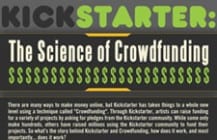 Amy Balliett: We did an IG flyer about the history of pizza consumption around the world for a pizza parlor that was opening up in Florida. They were opening five locations, and they wanted to notify people that they were opening those locations. We created an IG for them that they could pass out the public to build up to opening night.
Amy Balliett: We did an IG flyer about the history of pizza consumption around the world for a pizza parlor that was opening up in Florida. They were opening five locations, and they wanted to notify people that they were opening those locations. We created an IG for them that they could pass out the public to build up to opening night.
Seattle24x7: That’s a prime example of an offline IG?
Amy Balliett: Exactly. Just like handing someone a coupon for a special discount at your restaurant.
Another example might be taking an “investment deck” and creating an IG out of it. It could be as simple as an 8 ½ x11 piece of paper handed to a venture capitalist, saying, “This is why you should invest in this company.”
Seattle24x7: And what makes it an IG, be it 8 ½ x11 or any other size, is the fact that you are rendering information with illustrated graphs, charts, and image, to communicate the message?
Amy Balliett: Exactly.
Seattle24x7: So visual information of any kind qualifies? Leonardo DaVinci would be one of our world’s early IG designers. And the first IG in your opinion?
Amy Balliett: I’m not sure I’d go as far as to say DaVinci, only because his work doesn’t convey very specific information and instead can be interpreted in many ways. That said, the debate over the correct definition of an IG has been going on for the past couple of years. My belief is that an IG is any visual representation of information, provided most viewers interpret it in the exact same way. So that means IGs are everywhere. They’ve always been everywhere. They started with cave paintings. One of the IGs that people tend to go back to is the one from the 1700’s that shows “Napoleon’s Invasion of Russia.”
Seattle24x7: What has been your most popular IG to date?
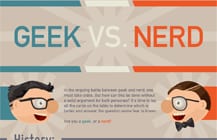 Amy Balliett: I have several favorites. Geek vs. Nerd is probably among the most popular. We’ve found that “versus” IGs tend to really take off. Another is actually the second IG we ever did, which is one that I designed, Google PageRank Defined. To date, that one has had over 3,000 inbound links. It helped us jump from page 5 to page 1 in Google for the target keywords that we were going after at the time.
Amy Balliett: I have several favorites. Geek vs. Nerd is probably among the most popular. We’ve found that “versus” IGs tend to really take off. Another is actually the second IG we ever did, which is one that I designed, Google PageRank Defined. To date, that one has had over 3,000 inbound links. It helped us jump from page 5 to page 1 in Google for the target keywords that we were going after at the time.
Another one of my faves was a very extensive IG depicting the 2008 Financial Crisis in America. It got picked up by The New York Times and CNN.com,
Seattle24x7: Jumping five pages in search engine rankings is impressive. Clearly higher search engine ranking has been the reward for excellence in IGs?
Amy Balliett: Ironically, we’ve also found that SEO-focused IGs are usually the most successful. In fact, we did an IG all about the history of SEO, and that one got shared everywhere.
Seattle24x7: Link building based on popularity is one side of the SEO equation, the other is content. Do you recommend taking the text from an IG or info-video and placing it somewhere else on the page? Like adding a video transcript to a video for SEO purposes?
Amy Balliet: It’s definitely the way to go for on-page optimization. I think that if you’re going to go the video route, and actually create a video infographic, it should be more in the form of an advertisement on your site, or something like an “About us” video. It should be informational about your brand. It shouldn’t be created for the sake of going viral. At least not at this time.
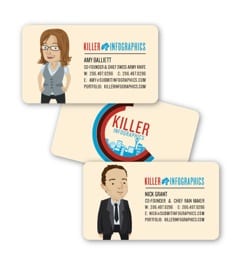 Seattle24x7: Early on your created SubmitInfographics.com as a database of IG’s. Today, there are some 30 or 40 others out there. Is there any SEO value in submitting to these directories for ‘DoFollow” link backs?
Seattle24x7: Early on your created SubmitInfographics.com as a database of IG’s. Today, there are some 30 or 40 others out there. Is there any SEO value in submitting to these directories for ‘DoFollow” link backs?
Amy Balliet: Yeah. Most of them are “DoFollow.” The IG submission path is always a good route to take. You just have to make sure that they do a couple of things: that they will actually write up something about your IG, and that they have categories, so that your IG falls into the category related to your niche to ensure the link isn’t too broad.
Seattle24x7: Let’s turn to the other best practices to market an IG. You recommend registering a Creative Commons License for the IG to discourage abuse.
Amy Balliett: We do indeed. Copyrighting infographics is a large concern for many businesses, as they don’t want their hard work and investment to be taken advantage of with nothing to show for in return. IGs are made to be shared, but some companies fear that their logo will get cut out of an IG and someone else might claim it as their own. Luckily, a Creative Commons License provides a quick, easy way to mitigate this risk.
The Creative Commons License is free and easy to obtain. All you have to do is fill out a few basic information fields and within seconds you will be given a Creative Commons License that helps to protect your infographics from copyright infringement.
Of course, check back with me soon and you’ll find that Killer Infographics has another tool around the bend to further protect infographics.
Seattle24x7: The final step you recommend in the infographic marketing process is reaching out to bloggers?
Amy Balliett: We recommend sending out customized, personalized, individualized letters to select bloggers advising them on why they will want to feature the infographic on their blog.
 Our email will contain a link to the thumbnail version of the IG. We simply edit the size of the source image, based on where it appears, with HTML. The embed code for the smaller image refers to the same image but with a width of 500 pixels.
Our email will contain a link to the thumbnail version of the IG. We simply edit the size of the source image, based on where it appears, with HTML. The embed code for the smaller image refers to the same image but with a width of 500 pixels.
We encourage our clients who are hosting the IG on their Website to put a smaller version of the IG on one page and the full-size image on another page. Not only does this create a second click through and page view, but it is helpful when there are different IG versions to display.
We have found that reaching out to the blogging community is the most natural way to connect special interest communities with infographics tailored to those interests, putting the IG that they will find appealing just a click away. [24×7]
Check out the latest in Killer Infographics at http://killerinfographics.submitinfographics.com/













